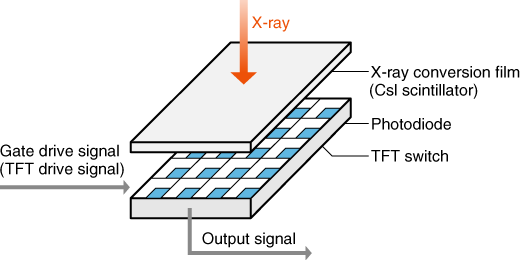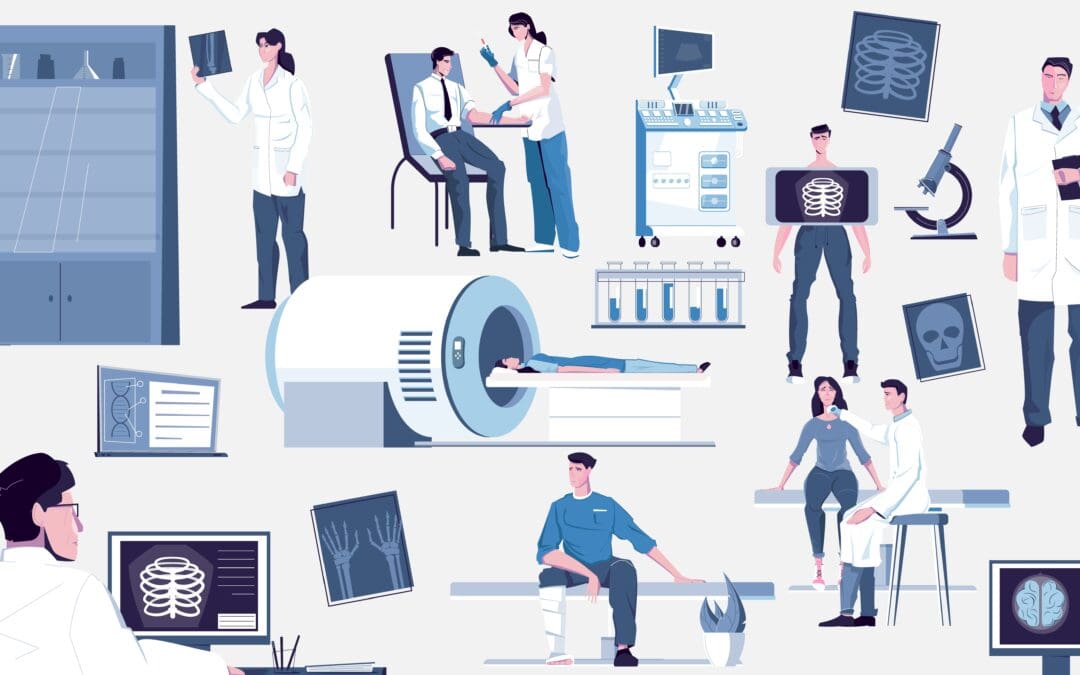In this article, we are going to share how digital X-rays work, what are the benefits of Digital X-rays and the comparison between traditional X-rays and Digital X-rays.
Key Takeaways:
- Digital X-rays, or digital radiography (DR), use electronic sensors to capture and process X-ray images instantly on computers.
- Compared to traditional X-rays, digital X-rays offer benefits such as cost-effectiveness, instant results, enhanced image quality, and environmental friendliness.
How do digital X-rays work?
Digital X-rays utilize electronic sensors to convert X-ray radiation into digital images instantly, offering benefits such as cost-effectiveness, instant results, and enhanced image quality. Compared to traditional X-rays, digital X-rays eliminate the need for film and chemical processing, providing a more efficient and environmentally friendly imaging solution.
Let’s break it down…
Beams of rays are generated by an X-ray machine and these X-rays can pass through some materials but are absorbed by others. When an X-ray beam is directed toward a human body, different tissues and organs in the body absorb X-rays differently.
Now detection – Behind a patient’s body, digital detectors can capture rays passing through a human body. It can be a flat-panel detector or an image plate.

Image: matsusada
Check out – X-rays room equipment
The detector converts the X-rays into an electrical signal. Finally, the signal gets digitized or converted into an image that can be viewed on computers.
Digital image formation: The electrical signal is then digitized and converted into a digital image.
Benefits of Digital X-Ray?
Here are some of the major benefits of Digital X-rays:
- Digital X-rays are less expensive
- You get images instantly
- Enhanced images for better diagnostics
- Patient data can be retrieved and stored easily
- Digital X-rays are environment-friendly as they eliminate chemical processing.
Digital X-Ray Vs Traditional X-Ray
| Feature | Digital X-ray | Traditional X-ray |
| Sensor | Digital sensor | Photographic film |
| Radiation | 80% less than traditional X-ray | Higher than digital X-ray |
| Results | Near-instant | Requires developing film in a dark room |
| Image quality | Adjustable contrast and brightness | Fixed images |
| Sharing and archiving | Easy and seamless | Requires physical storage and mailing |
| Cost | Higher initial equipment cost, but saves on film and chemicals | Lower initial equipment cost, but higher maintenance cost |
Impact on Healthcare Practices:
Digital X-rays have significantly impacted the workflow and efficiency of healthcare practices. The blog explores how this technology streamlines processes, allowing for quicker diagnoses, seamless data transfer, and improved collaboration among healthcare professionals. It also touches upon the role of artificial intelligence in image interpretation, paving the way for more accurate and timely results.
Digital X-rays function by utilizing electronic sensors, not film. X-ray beams pass through the body, and sensors convert transmitted radiation into digital signals. These signals are processed to create detailed, high-resolution images, facilitating the diagnosis and treatment of diverse medical conditions with enhanced efficiency and precision.
In a nutshell
Digital X-rays are a technological achievement. They offer results instantly, less radiation, and high image quality for better and more precise diagnosis. From bone breaks to hidden fractures, digital X-ray machines have transformed healthcare imaging.
Frequently Asked Questions
What is a Digital X-ray?
Digit X-ray AKA digital radiography is a contemporary medium to capture or examine a patient’s body. It creates immediately viewable images so that they can be analyzed instantly.
Is digital X-ray safe?
Yes! Digital X-rays are safe.
How long does it take to get results from a digital X-ray?
Our high-quality and affordable digital X-ray machines produce X-rays in a few minutes. Even faster if it’s an emergency case.
Are digital X-rays more expensive than traditional X-rays?
Digital X-rays are less expensive. Because digital X-rays eliminate film processing and storage costs.
Do I need any special preparation for a digital X-ray?
No special preparation is required.

